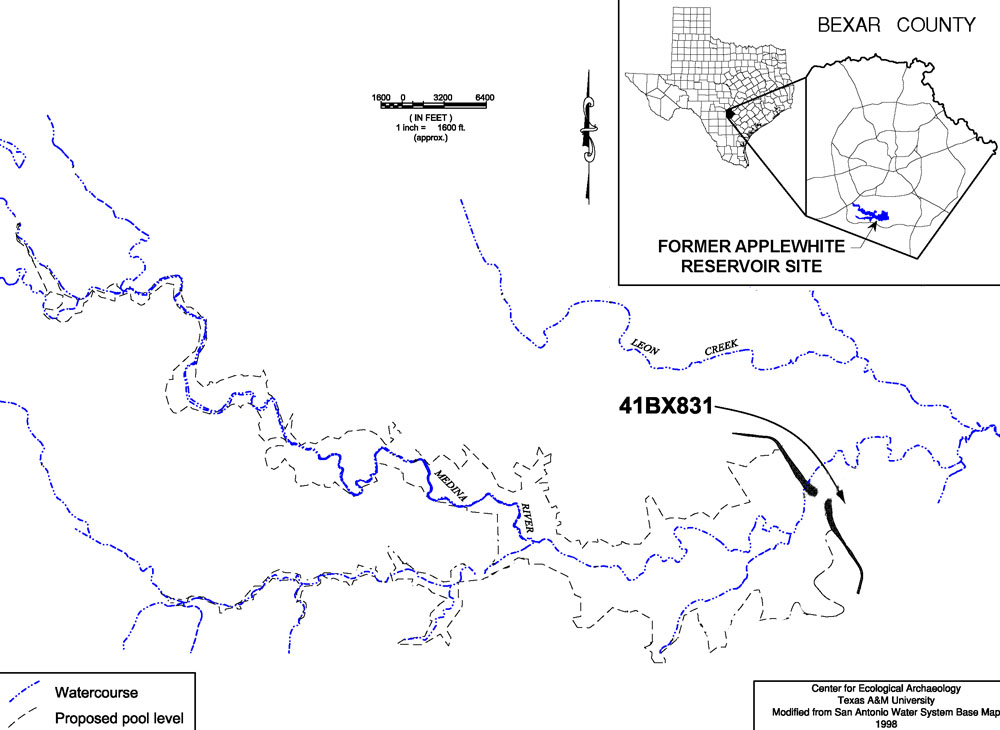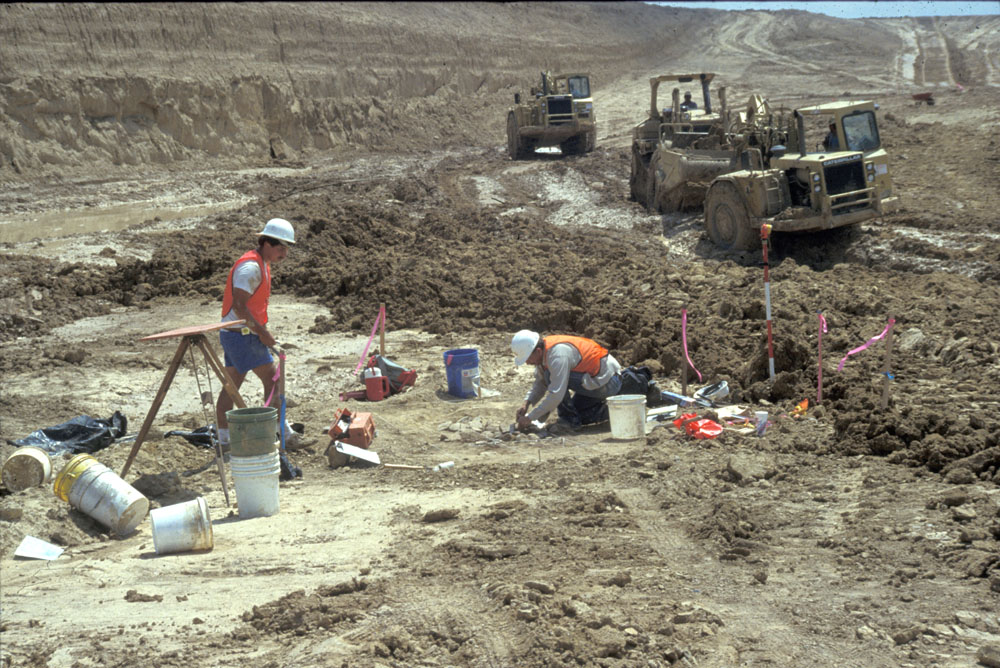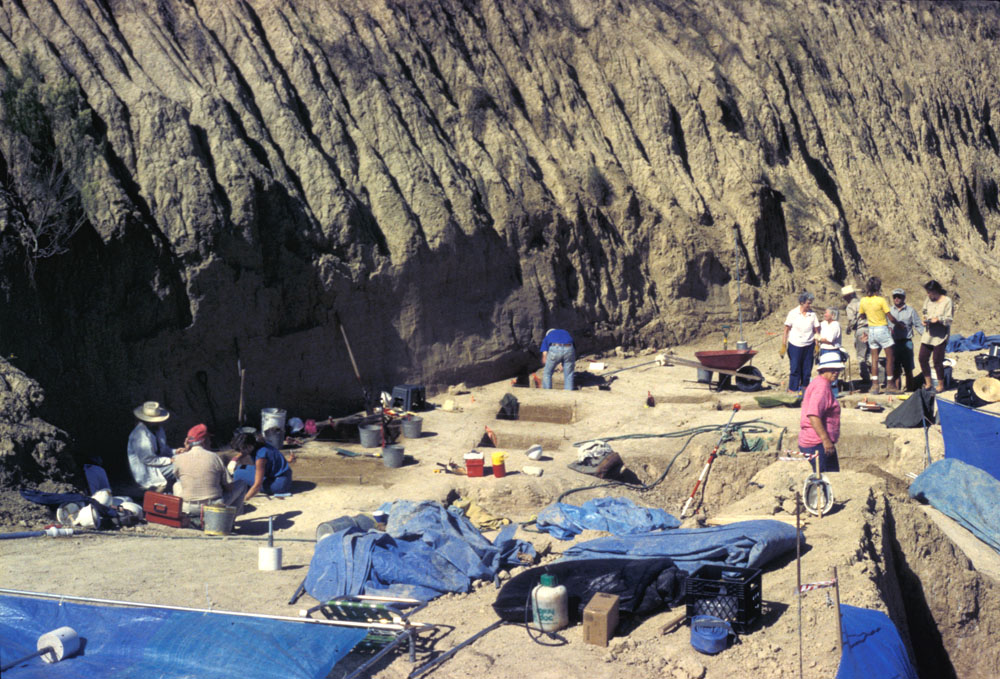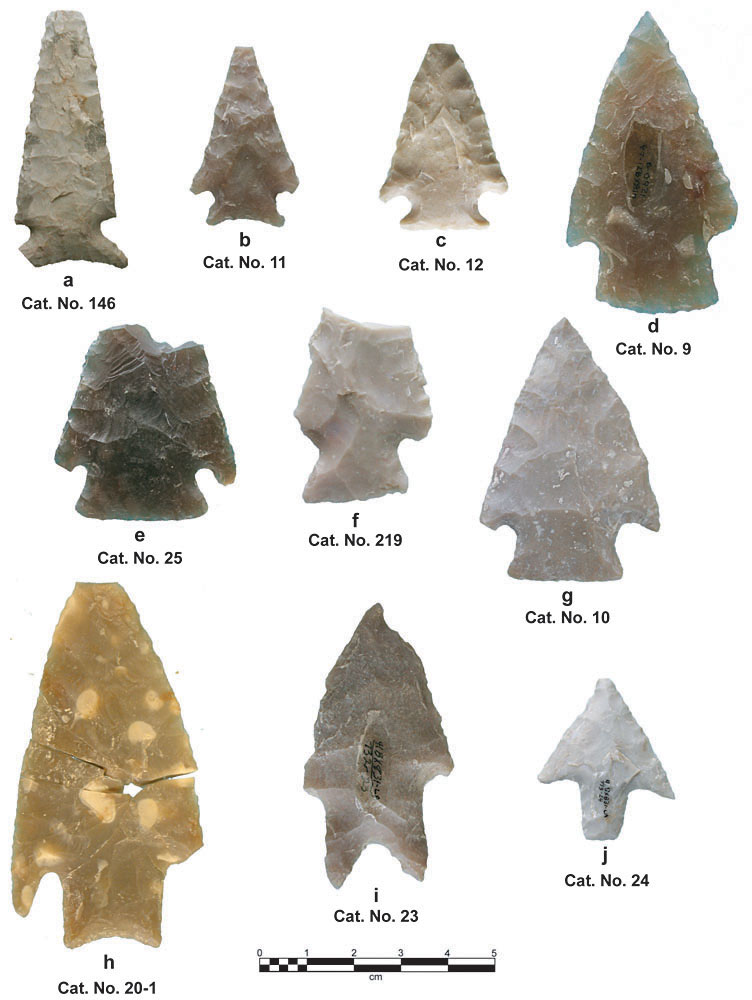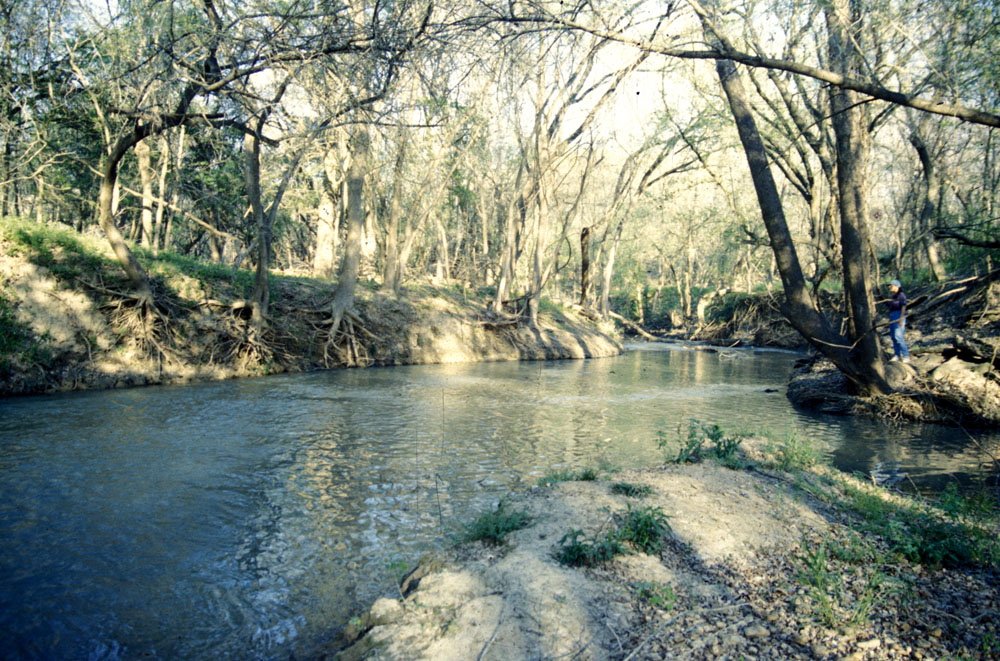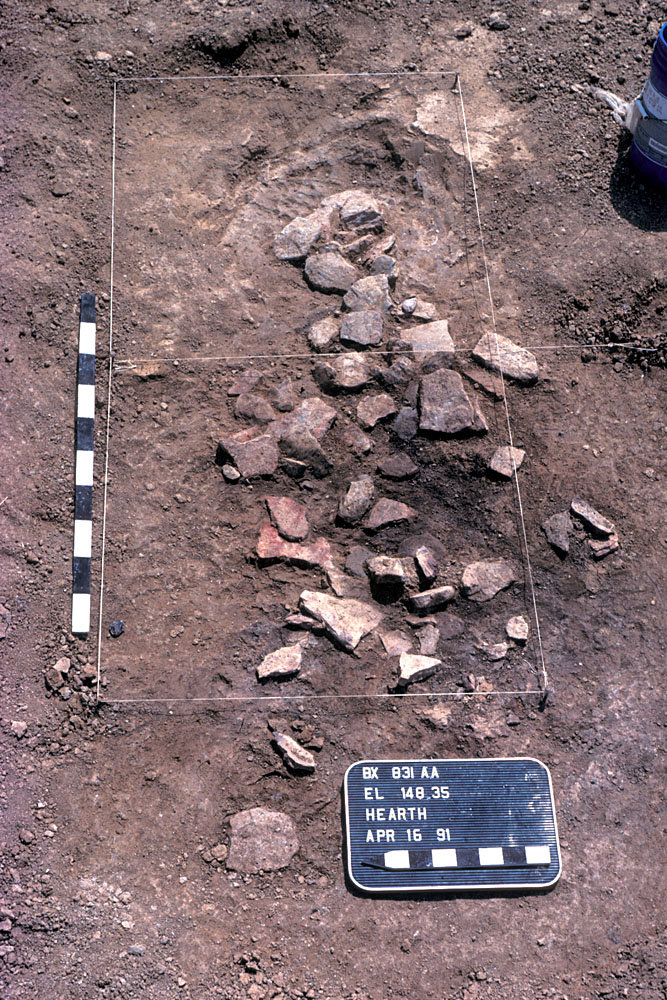
|
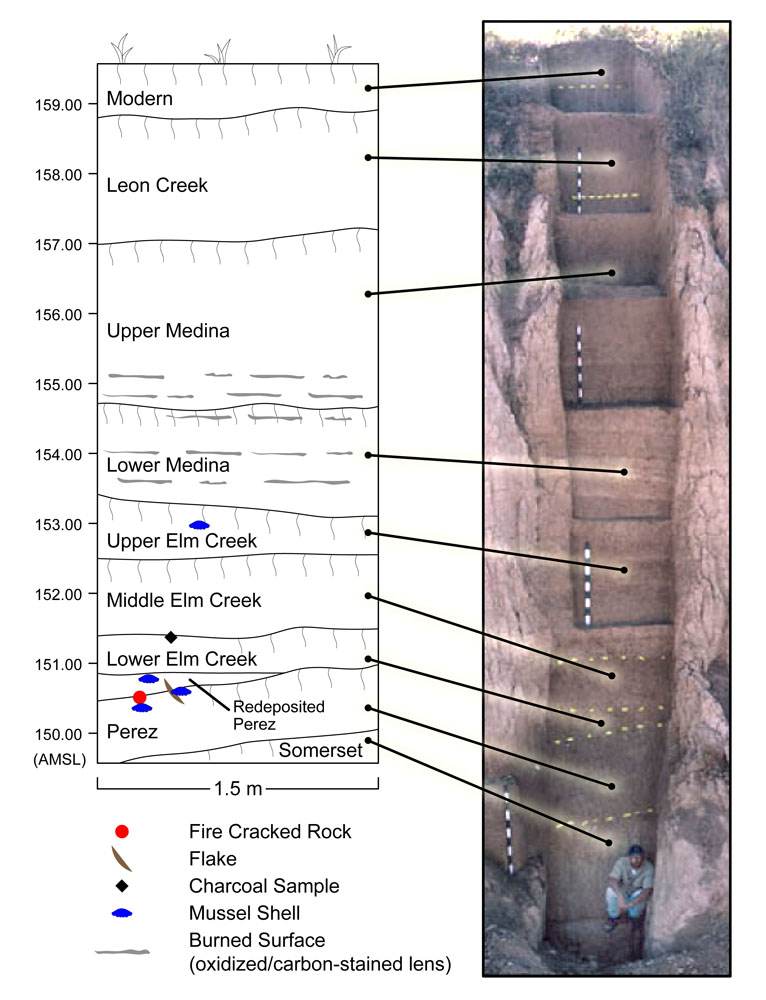
|
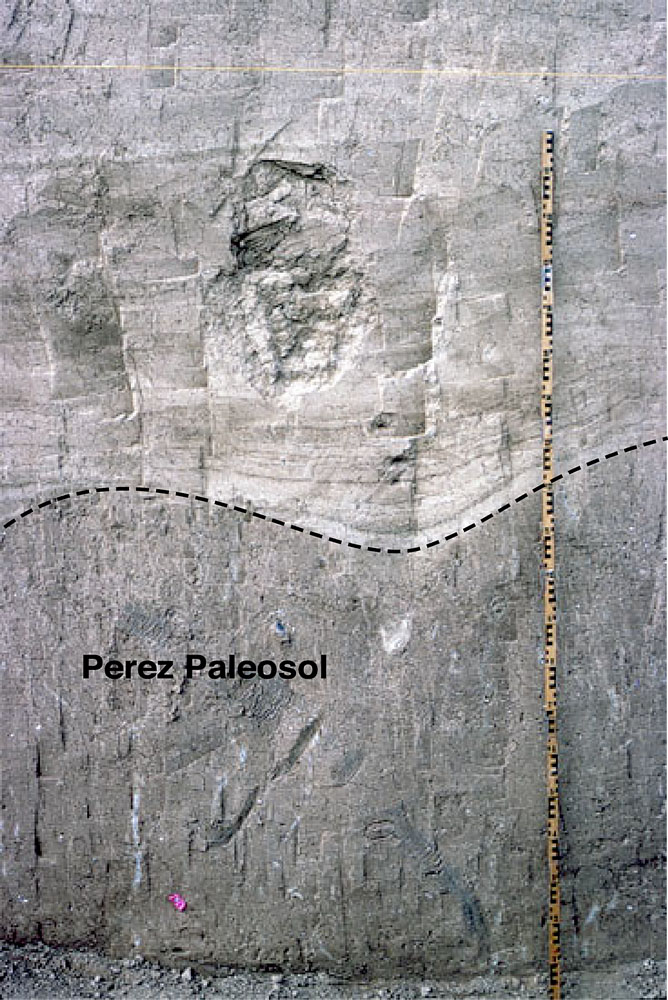
|
In This ExhibitIn this exhibit readers can learn the story of life at the Richard Beene site throughout prehistory as well as the unique story of the Applewhite Reservoir project. The exceptional stratigraphy of the site allowed archeologists to identify patterns of artifacts and features in order to create a more complete accounting of the ways hunter-gatherer groups used resources found on the landscape. In the first section, explore the Natural Setting of the site and the Medina River valley. The groups who camped in the area took full advantage of its location in the transitional zone, or ecotone, between the Edwards Plateau, South Texas Plains, Blackland Prairie, and the Post Oak Savannah. The Investigations section illustrates the wide variety of material culture recovered from the Richard Beene site and examines what can be learned about prehistoric life by examining not only the artifacts but the contexts in which they were found. The Applewhite Reservoir section tells the story of the construction of the reservoir spillway and the unique, often trying circumstances in which the excavation of the Richard Beene site took place. In addition, readers will learn about the abandonment of the project after voter referenda in 1991 and 1994, as well as about subsequent efforts to preserve the site as the centerpiece of an educational, research, and recreational facility in the abandoned reservoir area. Life at Beene explores the ways in which life changed (and often stayed the same) for the people who called the area near the site home throughout the last 10,000 years. In the Kids section, readers of all ages can learn more about life at the site with Dr. Dirt, the armadillo archeologist. School teachers can download a lesson plan from the Teaching section that will help their students understand more about the evidence archeologists used to interpret the cultural remains at the Richard Beene site. Credits & Sources acknowledges those who contributed to the work at the site as well as this exhibit. |
|
